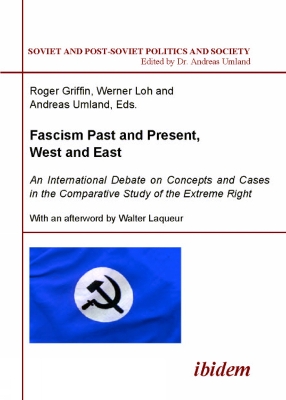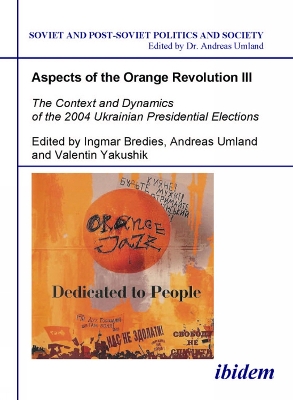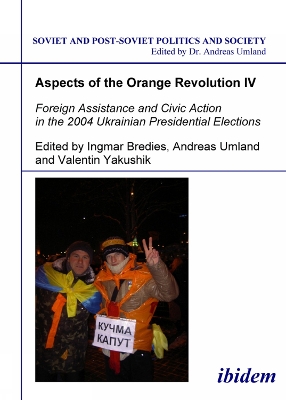Soviet and Post-Soviet Politics and Society
4 total works
In the opinion of some historians the era of fascism ended with the deaths of Mussolini and Hitler. Yet the debate about its nature as a historical phenomenon and its value as a term of historical analysis continues to rage with ever greater intensity, each major attempt to resolve it producing different patterns of support, dissent, and even hostility, from academic colleagues. Nevertheless, a number of developments since 1945 not only complicate the methodological and definitional issues even further, but make it ever more desirable that politicians, journalists, lawyers, and the general public can turn to "experts" for a heuristically useful and broadly consensual definition of the term. These developments include: the emergence of a highly prolific European New Right, the rise of radical right populist parties, the flourishing of ultra-nationalist movements in the former Soviet empire, the radicalization of some currents of Islam and Hinduism into potent political forces, and the upsurge of religious terrorism.
Most monographs and articles attempting to establish what is meant by fascism are written from a unilateral authoritative perspective, and the intense academic controversy the term provokes has to be gleaned from reviews and conference discussions. The uniqueness of this book is that it provides exceptional insights into the cut-and-thrust of the controversy as it unfolds on numerous fronts simultaneously, clarifying salient points of difference and moving towards some degree of consensus. Twenty-nine established academics were invited to engage with an article by Roger Griffin, one of the most influential theorists in the study of generic fascism in the Anglophone world. The resulting debate progressed through two 'rounds' of critique and reply, forming a fascinating patchwork of consensus and sometimes heated disagreement. In a spin-off from the original discussion of Griffin's concept of fascism, a second exchange documented here focuses on the issue of fascist ideology in contemporary Russia.
This collection is essential reading for all those who realize the need to provide the term 'fascism' with theoretical rigor, analytical precision, and empirical content despite the complex issues it raises, and for any specialist who wants to participate in fascist studies within an international forum of expertise. The book will change the way in which historians and political scientists think about fascism, and make the debate about the threat it poses to infant democracies like Russia more incisive not just for academics, but for politicians, journalists, and the wider public.
Most monographs and articles attempting to establish what is meant by fascism are written from a unilateral authoritative perspective, and the intense academic controversy the term provokes has to be gleaned from reviews and conference discussions. The uniqueness of this book is that it provides exceptional insights into the cut-and-thrust of the controversy as it unfolds on numerous fronts simultaneously, clarifying salient points of difference and moving towards some degree of consensus. Twenty-nine established academics were invited to engage with an article by Roger Griffin, one of the most influential theorists in the study of generic fascism in the Anglophone world. The resulting debate progressed through two 'rounds' of critique and reply, forming a fascinating patchwork of consensus and sometimes heated disagreement. In a spin-off from the original discussion of Griffin's concept of fascism, a second exchange documented here focuses on the issue of fascist ideology in contemporary Russia.
This collection is essential reading for all those who realize the need to provide the term 'fascism' with theoretical rigor, analytical precision, and empirical content despite the complex issues it raises, and for any specialist who wants to participate in fascist studies within an international forum of expertise. The book will change the way in which historians and political scientists think about fascism, and make the debate about the threat it poses to infant democracies like Russia more incisive not just for academics, but for politicians, journalists, and the wider public.
The third volume of Aspects of the Orange Revolution complements the essays of the first two collections providing further historical background on, and analytical insight into, the events at Kyiv in late 2004. Its seven contributions by both established and younger specialists range from electoral statistics to musicology, and deal with, among other issues, such questions as: Why had blatant election fraud not generated mass protest before 2004, but, in that year, did? How was Viktor Yushchenko able to collect enough votes to defeat the establishment candidate Viktor Yanukovych, and become the new President of a socially, geographically and culturally divided country? How was it possible to prevent large-scale violence, and which role did the judiciary play during the quasi-revolutionary events in autumn-winter 2004? What legal foundations and court decisions made the repetition of the second round of the presidential elections possible? Which campaign instruments, and political 'technologies' were applied by various domestic and foreign actors to activate the Ukrainian population? How did the internet and music become factors in the emergence of mass protests involving hundreds of thousands of people? To which degree and how did external influences affect the Orange Revolution? Erik S Herron, Paul E Johnson, Dominique Arel, Ivan Katchanovski, Ralph S Clem, Peter R Craumer, Hartmut Rank, Stephan Heidenhain, Adriana Helbig and Andrew Wilson present a multifarious panorama of the origins and dynamics of the processes that changed the nature of political and civic life during and between the three rounds of Ukraine's fateful 2004 presidential elections.
Reports by international governmental and non-governmental organisations on the 2004 presidential elections in Ukraine constituted a significant factor in generating, facilitating and completing the Orange Revolution. Ukrainian civil society, mass media, courts and political parties were the main driving force behind the popular uprising that returned Ukraine to the path of democratisation it had embarked on in 1991. Yet, the unambiguous stance and political weight of such institutions as the EU, PACE, NATO, and, above all, OSCE played their role too. The democratic movement benefited from the spectre of international isolation and stigmatisation of the Ukrainian state had President Leonid Kuchma decided to prevent a repetition of the second round of the voting. The volume collects not all, but some of the most widely discussed reports, including English translations of selected sections of the three reports produced by the CIS International Observers Mission. The latter as well as a report by an Israeli institute depart from the assessments of the other organisations represented here, allowing for comparison of diverging evaluations of the same events. The volume assembles full or excerpted official reports of the International Republican Institute, Tel Aviv Institute for the Countries of Eastern Europe and CIS, European Network of Election Monitoring Organizations, Parliamentary Assembly of the Council of Europe, Organization for Security and Cooperation in Europe Office for Democratic Institutions and Human Rights, and Commonwealth of Independent States. Contributions by Jevgen Shapoval and Roman Kupchinsky introduce and conclude the collection.
The fourth volume of Aspects of the Orange Revolution continues the previous volume's discussion on the impact of foreign actors on Ukrainian politics. It provides both scholarly analyses and first-hand accounts. The collection not only investigates, but also gives voice to, some of those involved in the events of 2004. While most of the volume's contributors have an academic background, some of them report here from the perspective of official election or informal participant observers of the three rounds of the Ukrainian presidential elections. Part One juxtaposes some contrasting views on how far Russia's and the West's various interests, activities and tools influencing the Orange Revolution were comparable to each other, and adequate given the circumstances. Part Two presents individual reports by a number of international election observers who were following the campaign and voting in various parts of Ukraine in 2004. Part Three presents three additional on-the-ground observations focusing solely on the notorious electoral district No. 100 of Kirovohrad Oblast. The contributions by Andreas Umland, Iris Kempe, Iryna Solonenko, Vladimir Frolov, Valentin Yakushik, Matthias Brucker, Jake Rudnitsky, Rory Finnin, Adriana Helbig, Paul Terdal, Tatiana Terdal, Peter Wittschorek, Hans-Joerg Schmedes, Adrianna Melnyk, Ingmar Bredies, Oxana Shevel and Volodymyr Bilyk add a number of novel points of view to those presented in the previous volumes. These partly contradictory and emotional texts as well as a number of photographs document the tense atmosphere and confrontational climate within which Ukraine's second phase of post-Soviet democratisation started in 2004.



